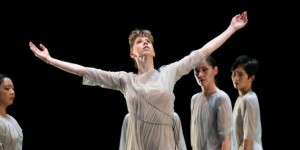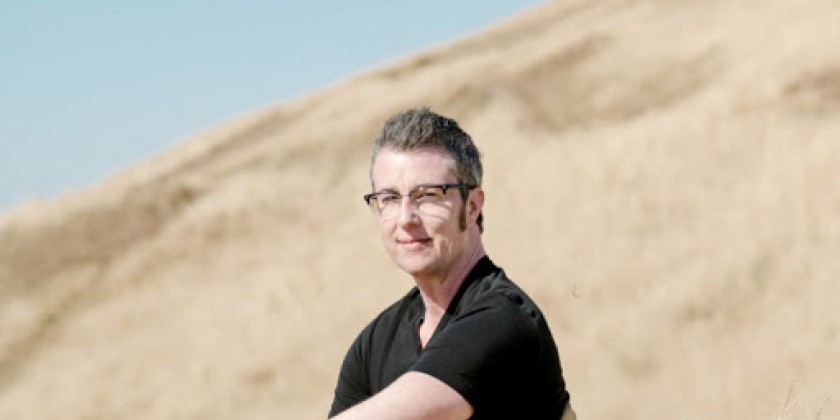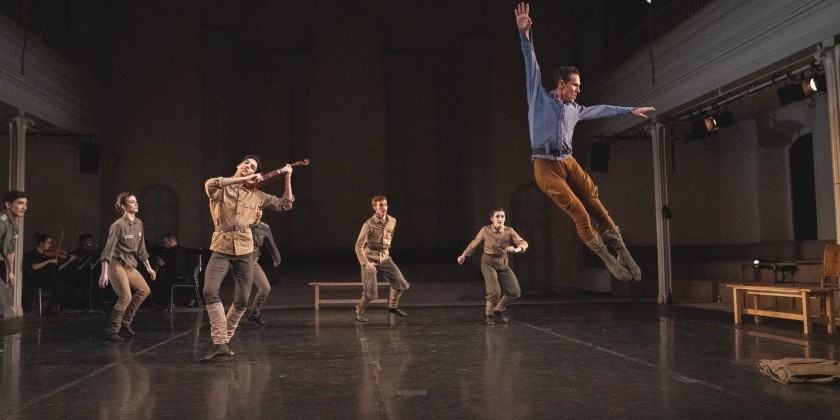IMPRESSIONS: Pam Tanowitz's Transportive "Pastoral" at Bard's Fisher Center

Pastoral
Fisher Center LAB Commission
Choreography: Pam Tanowitz
Décor: Sarah Crowner
Music: Caroline Shaw
Featuring audio recordings of Beethoven's Symphony No. 6 in F major, Pastoral, performed by:
The Knights (2008), Großes Odeon-Orchester (Odeon 1913), The Victor Concert Orchestra (Victor 1913)
Pam Tanowitz Dance: Marc Crousillat, Christine Flores, Lindsey Jones, Maile Okamura, Caitlin Scranton, Stephanie Tersaki, Anson Zwingelberg, Taylor LaBruzzo (Understudy)
Musicians: Bassoon - Dana Jessen, Clarinet and Bass Clarinet - Bill Kalinkos, Oboe and English Horn - Andrew Nogal
Costume Design: Reid Bartelme
Sound Design: Justin Ellington
Production and Lighting Design: Davison Scandrett
Venue: Sosnoff Theater, Fisher Center at Bard College, 60 Manor Ave, Annandale-On-Hudson, NY
Dates: June 27 - 29, 2025
Pam Tanowitz’s latest dance, the idyllic Pastoral (set to Beethoven’s Symphony No. 6 in F major, the Pastoral Symphony), a 60-minute work for seven dancers, portrays a bucolic day in the country. Framed by an ever-evolving set design and a multidimensional soundscape, Tanowitz masterfully builds the abstract dance into something idiosyncratic, fascinating, and unmistakably her own. It is little wonder that she is considered a major American choreographer.

The work draws on three Pastoral Symphony recordings from 1913 and 2008, whose textures range from scratchy and distant to clear and bright. Composer Caroline Shaw overlays the five-movement symphony with birdsong, car horns, bells, and cricket chirps. Three musicians positioned in the pit deftly play bassoon, clarinet, and oboe. At times, they accompany the recorded orchestral passages; at others, they perform extended solos independently. The clarinetist whistles; the bassoonist uses her mouthpiece like a kazoo.
Throughout the piece, the stage at Bard’s Fisher Center shifts from expansive to intimate, depending on the striking arrangement of two 25’ high curtains that hug the stage sides, three screens (two moveable), crumpled fabric, and light. Each scene is like entering a different room in a house. The choreography suggests images of buzzing insects, flitting birds, and a flock of resting sheep. For an urbanite, a pastoral is a day of repose in the countryside. Tanowitz fulfills this vision by pulling the landscape into the theater. Occasionally, city sounds intrude, reminding us that we can never fully leave the present behind.

Infused with offbeat humor and specific in its minutiae, the movement reflects the complexities and nonconformity of nature — a jagged rock formation, the ever-changing rill of a brook, the irregular veins in a leaf. Harmony is prominent, for prey are not killed, the bee does not sting, the snake does not bite, and lightning does not strike, though ominous rumblings are heard.

Costumed in handsome jumpsuits in hues of coral, ochre, blue gray, and chartreuse (some half one color and half another), by Reid Bartelme, each performer is distinctive. In a central trio for the assured Marc Crousillat, Christine Flores, the dance’s steady compass, and the lithe and attentive Anson Zwingelberg, the dancers skim onto the stage, navigating through one another with hops and arabesques. The trio returns with slight changes, such as Flores jumping confidently into the arms of Crousillat and Zwingelberg.

One towering curtain opens, decorated with abstract Matisse-like white leaves against a forest green naturalistic form. Crousillat, hobbling with a leading forced-arch foot and a long leg behind, pursues the fleet-footed Maile Okamura. Lindsey Jones chugs in a backward oval, one arm circling. Later, facing the audience, her off-center body falls to the side, propelled by a repeated push that slices through the group. At another point, she slowly unfolds into an arabesque on forced arch. She swivels as recorded traffic sounds drone, then lifts her leg to passé, fingers touching the crown of her head. Dancers clasp their arms around their shoulders, bounce upright in fourth position, and wriggle their shoulders. Flores kneels as a large green screen is pulled by the dancers to center stage. Later, she executes a slow split behind a curtain with one leg and half her body visible. A seated cluster of dancers casually tucks their legs to the side, and holds cupped hands upward, as if making an offering to the sky.

A pale green panel drops quietly to hang above the action while a huge swath of hunter green cloth extends onto the stage lip, which dancers drag farther in. One curtain closes as the exceptional company comes together in a stepping, grapevine-like jig. In unison, Jones and Caitlin Scranton, tall and commanding, double kick and boomerang their legs, then stop abruptly with arms extended horizontally. Okamura adds a velvety undertone as she battement-turns into arabesque and drives backward. Occasionally, the dancers tap their thighs or jump in place with knees bent and toes touching to form a diamond. A roll of thunder resounds in the fourth movement of the symphony, underscored by eerie bluish light. After the storm, Crousillat carries an orange square screen that masks his body. The sun has returned, and we hear tree frogs and birds in both recorded and live interpretations in the final movement.

One tender motif that recurs is an exchange between Jones and Zwingelberg: their entwined arms form diamond shapes as they both bend to the side. She slowly lowers his lengthened body to the floor. In a dance where the performers barely touch, this is a rare and potent moment. Then, she gently lifts him, and to return the favor, he carefully lowers her. The hanging screen ascends and disappears.

The movement structure of Pastoral, prioritizing abstract shape, rhythm, and spatial design, draws out meaning and emotion. The off-kilter phrases shift direction quickly, with groupings scattering and forming new configurations. The space expands and contracts like the inner workings of a telescope. Pastoral invites reflection rather than dictating it, leading each viewer to a place of quiet completion.













